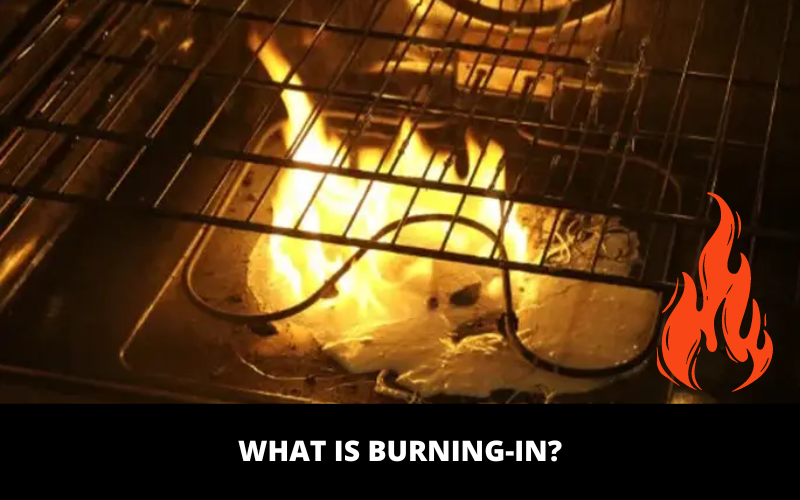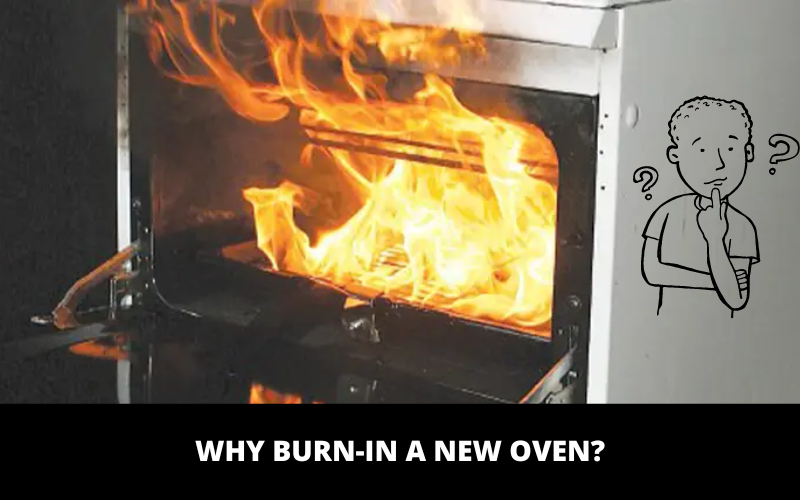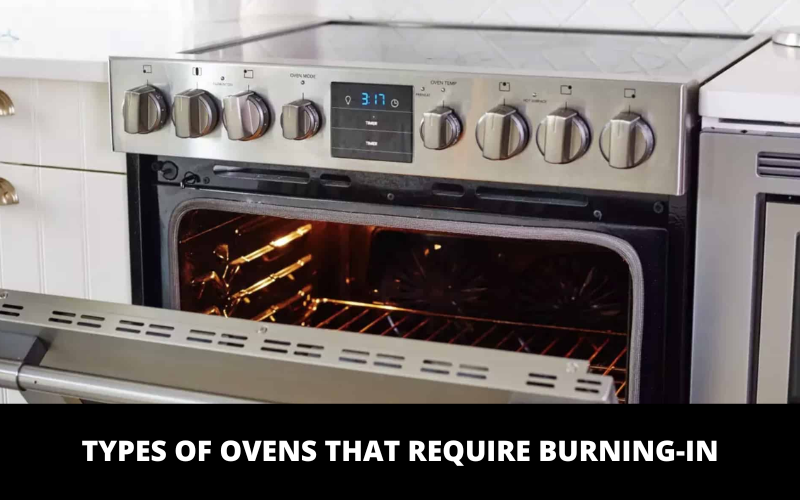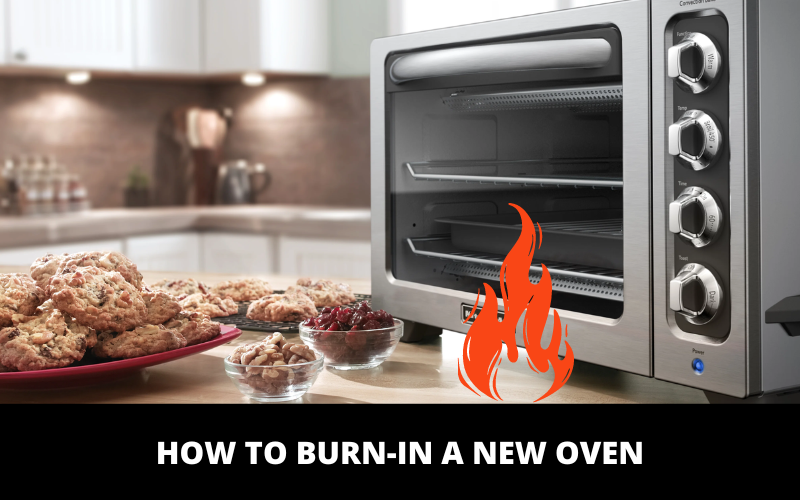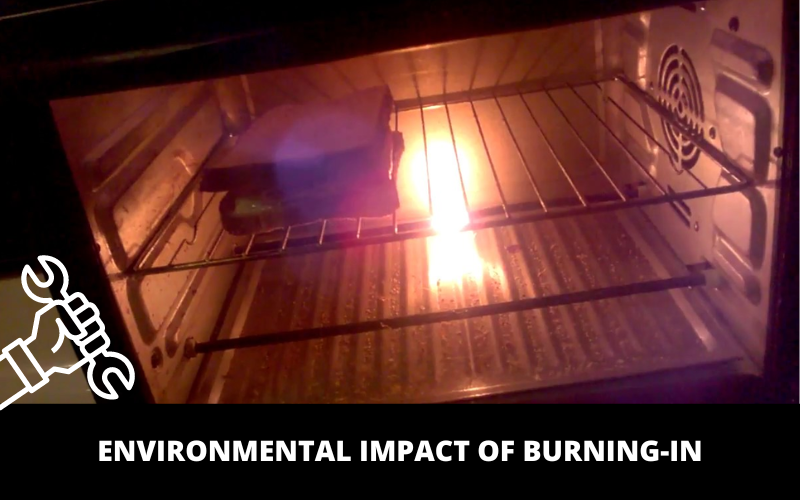When you buy a new oven, the most common question is: Do you need to burn it in a new oven? I would say yes. The reason behind this is that, as your oven is newly bought, there is a chance that it might contain some foul odor and contaminants inside it. Moreover, it can also contain manufacturing residues like dust, oils, and coatings.
So, I would say it would be a good idea to burn in a new one to eliminate all such residues. By burning in, you will assure yourself that your oven will prepare a healthy meal for you in the long run.
What is Burning-In?
- Definition of Burning-In Now, burning-in is a process of curing, where you need to set your oven to a specific high temperature. Doing this allows your oven to remove all kinds of manufacturing residues like dirt, dust, and oil. This allows your oven to prepare a healthy meal for you shortly.
- Historical Context of Burning-In Ovens: Burning-in is not a modern technique. Our ancient civilizations implemented this process a few centuries ago.
Whenever they buy new cooking vessels, they wash them and clean them properly to make them safe for cooking food materials. And the same thing you can apply in the burning-in process. Here, you are burning in your oven to set it free from the manufacturing residues, allowing it to become a healthy cooking appliance.
Why Burn-In a New Oven?
Removing Manufacturing Residues:
your oven would be in a shop before you purchased it. So, it is obvious that it might contain a lot of manufacturing residues like dust, oils, and coatings.
So, if you directly start using your newly bought oven, there is a high chance that the manufacturing residues might affect the quality of your food. So, to eliminate this situation, the best thing I can suggest you do is to burn in the oven to get your oven free from all of these manufacturing residues.
Eliminating Odors and Contaminants
Besides having manufacturing residues, your newly bought oven will also have foul odors. Now, how will your oven get caught up with such odors without preparing the food? Well, it’s not just that by cooking food, your oven is going to catch up with some foul odors.
As you can see, your newly bought oven might contain many packaging materials made of cardboard. So it is obvious that the smell of cardboard will get set in your oven as it has been kept there for a long time. So, burning it will help you eliminate all these kinds of orders and contaminants from it,
Preparing the Oven for Cooking
In order for your oven to perform perfectly, it would be a cool idea to burn in your new oven. This will allow you to get an idea of how perfectly it is working.
Benefits of Burning-In
When a new oven is burned in, it starts distributing the heat evenly, allowing you to get a perfectly cooked meal on your table. Now, as we all know, burning in actually removes all kinds of residues that are set in your new oven. It would actually increase the longevity of your oven by eliminating all sorts of residues from it.
- Enhanced safety for food preparation: When your new oven is free from all kinds of fowl orders and contaminants, you will definitely get healthy food. Thus, the burning process of your new oven is actually removing the risk of food contamination for you.
Types of Ovens that Require Burning-In
- Conventional Ovens Now, I highly recommend that if you have a new conventional oven, which is either electric or gas, you burn it in before starting to use it for cooking purposes.
- Self-Cleaning Ovens These ovens benefit from the burning process, which helps remove all kinds of manufacturing residues.
How to Burn In a New Oven
- Preparing the oven for burning in: Before you start the burn-in process, you must empty your oven by removing accessories like packaging materials and racks.
- Setting the Appropriate Temperature and Duration Now, every type of oven has a specific temperature for its burn-in process. So, I recommend you refer to your new oven’s manufacturer guide to get the perfect idea of how much temperature and for how long you should be burning in it.
- Ventilating the Area During the Process Now, as you will burn in the oven at a high temperature, I recommend placing your oven in a well-ventilated area. This will prevent the buildup of toxic odors and fumes during the process
Burning-In Safety Precautions
- Using Proper Ventilation, when you are about to perform a burn-in process, I suggest you place your oven in a well-ventilated well-ventilated area. Good ventilation will prevent the buildup of toxic fumes and provide a safe cooking environment.
- Avoiding Contact with Hot Surfaces As you are going to heat your new oven, its surfaces will be hot. So, when the burn-in process is over, don’t start touching the oven surfaces directly with your bare hands. Instead, you can use gloves to protect against any kind of burn or injury.
- Monitoring the Burning-In Process Now, one thing you need to do during the burning-in process is constantly monitoring the temperature so that it doesn’t create any issues.
Common Misconceptions About Burning-In
- Burning-In is Only Necessary for Commercial Ovens: This is the biggest misconception I have heard many times from people saying that this burning-in process is meant for commercial ovens only. Not at all. It is meant for all kinds of commercial or conventional ovens.
- Skipping the Burning-In Process is Harmless. If you skip the burning-in process, your oven will always have foul odors and contaminants, contaminating your food. Thus, it will eventually affect your health.
FAQs About Burning-In
How Often Should You Burn In a New Oven?
You should be burning in your new oven before you start using it. After that, you can burn it in your oven periodically for maintenance.
Can You Use the Oven Immediately After Burning-In?
Once the burn-in process is completed, you should wait some time and allow the oven to cool. Then, you are good to use the oven.
What Should You Do If You Smell Burning During the Process?
If such a situation arises, I suggest you turn off your oven immediately and refer to its manufacturer’s guide. Even after that, if you still need help, consult a technician.
Environmental Impact of Burning-In
- Energy Consumption During Burning-In As you are going to provide high temperature to your oven and switch it on during the process, it is obviously going to consume a large amount of energy, but you should see the long-term benefits that you are getting from this process.
- Disposal of Packaging Materials Once you remove the packaging materials from the oven, I suggest you dispose of them in a proper place to avoid any damage to the environment.
Real-Life Experiences with Burning-In
- Personal Anecdotes from Home Cooks Many home cooks share their experiences about the burning-in process. So I suggest you refer to such home cooks and follow their guidelines.
- Testimonials from Appliance Owners Yes, it is obvious. Many of your appliance owners might have given feedback during their burning process. So, I recommend you refer to that feedback, as you will get the perfect idea from there.
Tips for Maintaining a Burned-In Oven
- Regular Cleaning and Maintenance Once the burn-in process is completed and you have started using your oven, I suggest you always clean and maintain it properly to allow it to have a long life.
- Monitoring Oven Performance: Always monitor your oven’s performance while it is ON. If you find any issues, contact the technician immediately.


